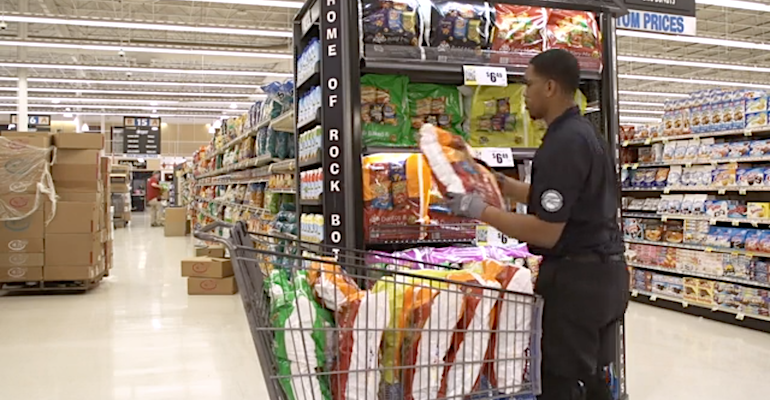Jeffrey Kennedy is co-founder, president and CEO of Itasca Retail, a West Des Moines, Iowa-based provider of inventory intelligence software for computer-generated ordering, DSD receiving, store perpetual inventory, forecasting and receiving. The views expressed here are those of the author.
 There are a many excellent reasons why direct-store delivery (DSD) has remained a widespread business practice for supermarkets and suppliers for more than half a century.
There are a many excellent reasons why direct-store delivery (DSD) has remained a widespread business practice for supermarkets and suppliers for more than half a century.
DSD accounts for 24% of unit sales and 52% of retail profits in the grocery channel, according to the Grocery Manufacturers of America. Retailers understand how they benefit greatly from the labor savings that happen when vendor reps perform routine merchandising, display merchandising and ordering tasks in their stores. That can add up to 17,000 hours per year, or roughly 25% of all labor in a typical large-format store, the GMA reported in a 2005 landmark study.
What’s more, goods transported to stores by DSD vendors arrive on their trucks, from their distribution centers, allowing retailers to operate a more streamlined supply chain infrastructure.
Suppliers, too, have strong incentives to provide DSD services, from speedier replenishment, localized distribution power and more effective product introductions. They make the investment because it helps them sell more.
While there is no overstating the value of this way of working for both retailers and suppliers, some entrenched DSD practices and tools are long past due for reconsideration. Concerns about planogram compliance and stockouts have intensified since COVID triggered the surge in digital shopping. Labor challenges are making life tougher across the board. Supermarkets are more dependent than ever upon accurate and current inventory data.
Inventory intelligence at the back door
To confront with these challenges, more grocery retailers are taking decisive steps to advance a “total DSD management” approach. This means deploying intelligent software tools to enable superior receiving and ordering practices. The benefits propagate across many fundamental areas of merchandising and store operations, while delivering strong financial returns.
“Total DSD” describes an integrated, software-enabled process that goes far beyond the back door. Determining the right order quantities at the end of the day is highly dependent upon capturing accurate receiving data at the beginning of the day.
Supermarket chains that are moving ahead on with total DSD management are motivated to seek advantages in five important areas:
• Streamlined receiving — Faster, more precise backdoor accounting, confirmation of receipt to the vendor and immediate identification of any deviations from order quantities. Minutes saved on the loading dock translate to less wait time for delivery trucks, which can add up to more stops on a daily route.
• On-shelf availability — Superior inventory accuracy enables DSD vendor reps to manage days of supply with fewer errors and minimal out-of-stocks. If an issue is encountered at the shelf, the vendor can immediately update the next order quantity using a handheld scanner.
• More accurate orders — DSD orders are optimized at each store to measured demand and compared against a reliable nightly forecast. The information is transmitted to the vendor’s system so that it consistently loads the exact quantities of the right items for each store on the trucks each morning.
• Labor savings — Accurate orders move directly from the loading dock to the shelf, with minimal double-handling and fewer trips to the back room. Removing most judgment calls from each visit allows DSD vendors to simplify some job requirements with better accountability and cover more territory per route.
• Culture of trust — Stores and reps quickly come to accept the backdoor accounting and trust the computer-generated orders provided by the system. Vendors gain better predictability at their own distribution points, which enables better planning and a truer read of actual demand. They can see the counts they capture at the shelf are accurately reflected in the next day’s orders.
Real-world implications
Retailers who have implemented total DSD management in their stores with our help report numerous practical benefits in daily use, including positive feedback from their vendor partners.
For example, “Retailer P” described a past scenario where its vendor might arrive with an order but then recommend the store accept more cases, based on instinct or its own sales goals. Too often, this resulted in excess stock in the back room, extra handling and shrink. Since it adopted optimized DSD receiving, both partners see how they benefit more when just the correct order quantity is delivered.
In another case, a DSD vendor said its reps are motivated to stay on the good side with the receivers they meet every day at the loading dock. They have learned to value how the system results in less wait time for counts to be completed, freeing up time for value-added merchandising tasks.
A major national manufacturer, in another scenario, told its retail partner that it has come to prefer unambiguous and highly reliable delivery confirmation and orders. Overall, they are able to sell more with less shrink and take advantage of a more reliable forecast, while better managing their own labor. The value is recognized especially at the last stop on a delivery route, when the quantities still match up with the final order of the day.
Several retailers also have emphasized how delivering precise order quantities are especially crucial for frozen foods because of the finite nature of display space.
As these anecdotes illustrate, grocery retailers see tangible benefits when they inject inventory intelligence into their DSD receiving practices. Vendors quickly grasp the benefits, too, and shoppers — their customers in common — enjoy superior service levels on every store trip and digital order.





